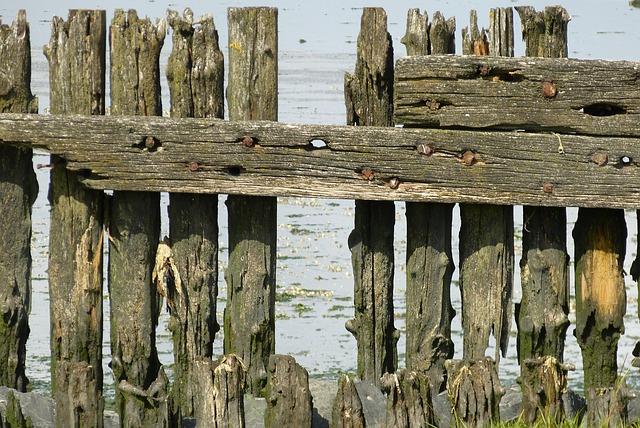In coastal areas, where harsh weather conditions and salt air pose unique challenges, durable wooden fencing is an attractive and sustainable solution. This article explores the benefits of strong, long-lasting wood fences tailored to meet the specific demands of coastal environments. From understanding local needs to selecting the ideal wood species, installation tips, maintenance strategies, and aesthetic advantages, discover how these fences can enhance coastal properties while withstanding the elements.
- Understanding Coastal Fencing Needs
- Advantages of Durable Wooden Fencing
- Choosing the Right Wood Species
- Installation Considerations for Coastlines
- Maintenance and Longevity Secrets
- Enhancing Coastal Property with Wooden Fences
Understanding Coastal Fencing Needs
Coastal areas present unique challenges when it comes to fencing due to harsh weather conditions, salt air, and potential exposure to moisture. Understanding these specific needs is crucial for any durable fencing solution. The primary considerations are materials that can withstand high winds, corrosion from salt water, and varying climates.
Wooden fences in coastal regions require special treatment to ensure longevity. Look for treatments that protect the wood from moisture absorption and prevent rot, such as pressure-treated lumber or specialized coatings. These measures not only extend the fence’s lifespan but also maintain its structural integrity, ensuring it can resist the relentless coastal elements.
Advantages of Durable Wooden Fencing
Durable wooden fencing offers an array of benefits for coastal areas. Firstly, it provides a natural aesthetic appeal that complements the surrounding environment, blending seamlessly with the landscape. This is particularly advantageous for regions boasting vibrant seascapes and diverse flora. Secondly, wood has exceptional insulating properties, helping to mitigate extreme coastal temperatures, both hot and cold. This can contribute to energy efficiency in nearby structures by reducing heating or cooling demands.
Moreover, wooden fencing can be an environmentally friendly choice due to its renewability and recyclability. Properly maintained, these fences can last for decades, outlasting many alternative materials commonly used in coastal settings. They also offer versatility in design, allowing homeowners and developers to create unique patterns and styles that enhance the overall beauty of the coastline while providing privacy and security.
Choosing the Right Wood Species
When selecting wood for coastal fencing, understanding the unique challenges posed by salt air and moisture is paramount. Not all woods are created equal in this regard, so choosing the right species is a crucial step. Opting for treated or naturally durable woods like cedar, redwood, or tropical hardwoods such as Ipe or Teak ensures superior resistance to decay and insect infestation.
These wood types possess inherent properties that make them ideal for coastal environments. Their dense structure and natural oils act as a barrier against moisture absorption, slowing down the process of rot and ensuring the fence’s longevity. Additionally, many of these species have a beautiful natural grain and color that can enhance the aesthetic appeal of your fencing project.
Installation Considerations for Coastlines
When installing durable wooden fencing in coastal areas, several unique considerations come into play. The harsh marine environment, characterized by salty air, high humidity, and frequent exposure to moisture, can accelerate wood decay and corrosion. Therefore, selecting a specific type of wood that’s naturally resistant to rot and pests is paramount. Treated cedar or pressure-treated pine are popular choices for their longevity in such settings.
Furthermore, proper drainage and ventilation are crucial. The fence should be installed with enough space between posts to allow for airflow, preventing moisture buildup. Additionally, ensuring a good seal around the bottom of the fence can help keep out salt water, further protecting the wood from erosion. These precautions contribute significantly to extending the lifespan of the wooden fencing in challenging coastal conditions.
Maintenance and Longevity Secrets
Maintaining durable wooden fencing in coastal areas requires a thoughtful approach to prolong its lifespan. Regular cleaning is essential, using mild soap and water to remove salt spray and other debris that can damage the wood. A good seal or varnish every few years will protect against moisture and UV rays, common issues along coastlines.
Additionally, choosing the right type of wood is crucial. Treatments like pressure-treating or using naturally durable species such as cedar or redwood can significantly enhance longevity. Proper installation with adequate spacing for water runoff and ventilation further safeguards against rot and decay, ensuring the fence remains strong and sturdy against coastal conditions.
Enhancing Coastal Property with Wooden Fences
Wooden fences offer an elegant and natural way to enhance coastal properties, providing both aesthetic appeal and functional benefits. The beauty of wood as a material is its ability to blend seamlessly with the surrounding environment, creating a harmonious look that many homeowners appreciate. For coastal areas, durable, weather-resistant wooden fencing is particularly valuable, as it can withstand harsh marine climates and extreme weather conditions.
These fences can serve multiple purposes, from defining property boundaries to providing privacy and security without compromising the coastal aesthetic. With careful selection of treated wood species and proper maintenance, wooden fences can last for decades, making them a wise investment for any coastal property owner looking to add value and curb appeal to their home.
